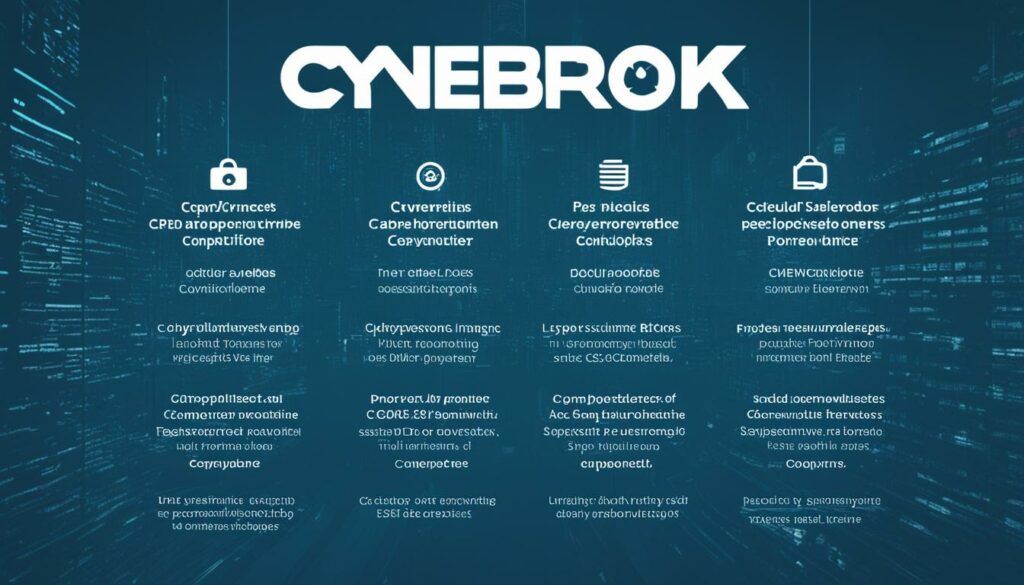Are you looking to improve the performance of your website? One effective solution is to incorporate a CDN, or content delivery network, into your web hosting strategy. CDNs are powerful tools that can enhance your website’s speed, user experience, and SEO rankings.
A CDN works by distributing your web content across multiple data centers located around the world. By hosting files such as HTML pages, scripts, style sheets, and multimedia files on CDNs, you can offload the load from your servers and optimize website performance. CDNs also offer additional services like load balancing, firewalls, and automatic HTTPS.
Implementing a CDN can greatly improve your website’s speed and ensure high availability for visitors all over the globe. In this comprehensive guide, we will explore CDNs in detail, discussing how they work, why you should use them, how to choose the right CDN provider, and how to add a CDN to your website.
Key Takeaways:
- CDNs are essential for improving web performance by distributing web content across multiple data centers.
- By hosting files on CDNs, you can reduce the load on your servers and improve website speed.
- CDNs offer additional services like load balancing, firewalls, and automatic HTTPS.
- Implementing a CDN can greatly enhance the user experience, increase SEO rankings, and ensure high availability for your website.
- Choosing the right CDN provider and adding a CDN to your website requires careful consideration and configuration.
What is a CDN?
A CDN, or Content Delivery Network, is a distributed network and storage service that hosts web content in different geographical regions. It serves as a proxy between your users and your origin server, reducing traffic handled by your servers. CDNs store and deliver various types of content including HTML pages, scripts, style sheets, and multimedia files.
By leveraging a CDN, you can:
- Reduce latency for users by delivering content from servers closer to their geographical location.
- Avoid downtime caused by data center outages or broken routes, as CDNs have multiple points of presence (PoPs).
- Benefit from services like load balancing and redundancy, which ensure high availability and better performance for your website.
A CDN optimizes web content delivery by distributing it across numerous servers in different regions. When a user requests a resource, the CDN delivers it from the server that is closest to the user, minimizing the distance the data needs to travel. This reduces latency and improves overall user experience.
“CDNs enable efficient content delivery by reducing latency and improving user experience.”
CDNs are commonly utilized by websites and applications that have a global user base and need to deliver content quickly and reliably regardless of the user’s location.
The image above showcases the global content delivery capabilities of a CDN, with multiple points of presence (PoPs) located in different geographical regions.
Why Should I Use a CDN?
There are several compelling reasons to integrate a Content Delivery Network (CDN) into your website. CDNs offer a multitude of advantages that can significantly enhance your website’s performance, optimize speed, improve SEO rankings, and reduce latency. By leveraging a CDN, you can offload traffic from your servers and enjoy faster load times, ensuring an exceptional user experience.
CDNs are designed to optimize speed and improve website performance. With the ability to cache and distribute content across multiple data centers worldwide, CDNs ensure that your website’s visitors experience minimal latency and fast page load times. By delivering content from servers closer to your users, CDNs reduce the distance data has to travel, resulting in a smoother and more responsive web browsing experience.
Furthermore, integrating a CDN can have a significant impact on your website’s SEO rankings. Search engines recognize the importance of fast-loading websites and often prioritize them in search results. By utilizing a CDN to improve your website’s speed and load times, you increase the likelihood of ranking higher in search engine results pages and attracting more organic traffic.
In addition, CDNs provide enhanced reliability and uptime. By hosting your website’s data in multiple data centers across different geographical regions, CDNs offer redundancy and resilience. In the event of a data center outage or broken route, CDNs automatically redirect traffic to alternative locations, ensuring that your website remains accessible and operational.
Key Benefits of Using a CDN:
- Offload traffic from your servers
- Optimize website speed and performance
- Improve SEO rankings
- Reduce latency for a global audience
- Ensure high availability and reliability
By leveraging a CDN, you can take advantage of its robust infrastructure and optimize the delivery of your website’s content. With reduced latency, enhanced performance, and improved SEO rankings, integrating a CDN is a practical and effective way to improve web performance and optimize user experience.
How Do CDNs Work?
CDNs, or content delivery networks, operate through a network of points of presence (PoPs) that host and serve content to users. Each PoP acts as a proxy between your users and your origin server, optimizing content delivery and enhancing performance.
When a user requests a resource, the CDN checks if it has the content cached in one of its PoPs. If the content is available, the PoP delivers it directly to the user. This caching mechanism reduces the load on your origin server and ensures faster load times for your website.
CDNs use two main methods for delivering content: pushing and pulling. When you push content, you proactively send it to the CDN beforehand, giving you control over what gets served. This can be useful for frequently accessed files or specific content updates.
On the other hand, pulling is a more automatic process where the CDN retrieves content as needed. When a user requests a resource that is not cached, the CDN pulls it from your origin server and delivers it to the user. This method is convenient for handling dynamic or less frequently accessed content.
Caching is a crucial aspect of CDN functionality. CDNs employ various caching methods to enhance performance and ensure efficient content delivery. By storing copies of your content in multiple locations, CDNs reduce latency and improve user experience.
CDN Work Process Overview
- The user sends a request for a resource from your website.
- The CDN’s PoP network receives the request.
- If the requested content is already cached in a PoP, it is delivered directly to the user.
- If the content is not cached, the PoP retrieves it from your origin server.
- The retrieved content is cached in the PoP for future requests.
- The PoP delivers the content to the user.
| Method | Description |
|---|---|
| Pushing | You proactively send content to the CDN beforehand, granting control over served content. |
| Pulling | The CDN retrieves content from your origin server as needed, accommodating dynamic or less frequently accessed content. |
| Caching Methods | The CDN employs various caching methods to ensure efficient content delivery and faster load times. |
CDNs play a vital role in optimizing content delivery, reducing server load, and enhancing the user experience. By distributing content across a network of PoPs and employing efficient caching methods, CDNs enable faster and more reliable access to your website’s resources.

How Do I Choose a CDN?
When it comes to selecting the right CDN provider for your website, there are several key factors to consider. These include pricing, availability, PoP (Point of Presence) locations, and overall suitability.
CDN pricing can vary, and it’s important to understand how each provider charges for their services. Most CDNs base their pricing on bandwidth usage, but some may have additional charges for cache hits, cache misses, and refreshes. To find the best deal, estimate your bandwidth needs and consider your future growth.
Availability is crucial when choosing a CDN, especially if your website serves a global audience. Check the uptime and reliability of the CDN provider’s PoP locations, particularly in the regions where your users are located. CDNs with PoPs closer to your users can provide better performance benefits, reducing latency and improving overall user experience.
To make an informed decision, it’s essential to compare different CDN providers. Evaluate their PoP locations, pricing structures, customer support, and any additional features they offer. This comparison will help you find the CDN provider that best aligns with your website’s specific needs and requirements.
CDN Provider Comparison Table
| CDN Provider | Pricing Structure | Availability (PoP Locations) | Additional Features |
|---|---|---|---|
| Provider A | Bandwidth-based pricing with no additional charges | Global PoP network with coverage in major regions | Advanced caching mechanisms, DDoS protection |
| Provider B | Tiered pricing based on bandwidth usage | PoPs in North America and Europe | Real-time analytics, instant purging |
| Provider C | Pay-as-you-go pricing with cache hit charges | Extensive PoP network with global coverage | Image optimization, mobile content acceleration |
By carefully considering these factors and comparing different CDN providers, you’ll be able to make an informed decision and choose the CDN provider that best suits your website’s needs. A reliable CDN can greatly enhance your website’s performance, user experience, and overall success.

How Do I Add a CDN to My Website?
Adding a CDN to your website depends on your hosting setup. Here are a few options to consider:
If you have a web hosting provider that offers a CDN:
Some web hosting providers offer CDNs as built-in or extra services. If your provider supports a CDN, enabling it is usually a straightforward process. They may provide instructions or a control panel where you can toggle the CDN on or off.
If you use a content management system (CMS) like WordPress:
CMS platforms often have plugins that support CDNs. These plugins allow you to integrate a CDN into your website and choose the CDN provider you prefer. All you need to do is install the plugin, follow the setup instructions, and configure your CDN settings within the plugin’s interface.
If you have a self-hosted website:
For self-hosted websites, you have more flexibility but also more setup requirements. The process typically involves the following steps:
- Research and choose a CDN provider that suits your needs.
- Sign up for an account with the chosen CDN provider.
- Configure DNS records to point your website’s domain to the CDN’s servers. This step may vary depending on your DNS provider, but the CDN provider should provide you with the necessary instructions.
- Enable the CDN on your website by following the CDN provider’s instructions. This may involve updating your website’s configuration files or using a CDN-specific plugin or tool.
- Upload your website’s content to the CDN. This can usually be done through the CDN provider’s control panel or via integration with your CMS.
To ensure a smooth integration, it’s essential to follow the specific instructions provided by your web hosting provider, CMS, or chosen CDN provider. These instructions may vary based on your setup and the CDN service you opt for.

Adding a CDN to your website can boost its performance, speed, and user experience. It’s worth exploring this option to optimize your site’s content delivery.
How Does a CDN Impact Performance?
CDNs play a crucial role in optimizing website performance, delivering content faster, and enhancing user experience. Performance tests have consistently shown that implementing a CDN can significantly improve speed and reduce load times, benefiting both website owners and visitors.
By leveraging a distributed network of servers strategically located around the world, CDNs cache website content and deliver it from the server nearest to the end-users. This approach minimizes latency, ensuring that users can access the requested content quickly and efficiently.
CDNs also optimize content delivery by reducing the data traveled between the origin server and the end-users. By delivering content from edge nodes distributed across various geographical regions, CDNs minimize the distance data needs to travel, resulting in faster load times and improved overall website performance.
Key Benefits of CDNs:
- Improved website speed and load times
- Reduced latency and improved user experience
- Optimized content delivery by minimizing data travel
- Enhanced website performance and responsiveness
Website owners and developers can leverage CDNs to deliver content efficiently, especially for multimedia files and dynamic content that typically put a strain on servers. CDNs not only enhance website performance but also support scalability and provide high availability, ensuring that your website can handle increased traffic and maintain optimal performance even during peak usage periods.
Performance tests have shown that CDNs significantly improve website speed and load times, reducing latency and enhancing user experience.
Overall, CDNs are a powerful tool for website optimization, improving load times, speed, and overall performance. Let’s take a look at a performance test comparison between a website with and without a CDN:
| Website without CDN | Website with CDN | |
|---|---|---|
| Load Time | 5.8 seconds | 2.3 seconds |
| Visitors | 500 simultaneous | 500 simultaneous |
| User Satisfaction | Average | High |
As the table above demonstrates, implementing a CDN reduced the load time by approximately 60% and significantly improved user satisfaction, making the website highly responsive and performant. These results highlight the tangible benefits of using a CDN to optimize website performance.
CDNs, through their caching mechanisms and strategic server locations, enhance website speed, reduce load times, and improve overall user experience.
Conclusion
Investing in a robust CDN infrastructure is crucial for optimizing content delivery and ensuring an exceptional user experience. CDNs leverage a vast global network of servers, implementing load balancing, caching mechanisms, and security features to improve website performance and minimize latency. By distributing content across multiple points of presence (PoPs), CDNs enable faster delivery, leading to enhanced SEO rankings and high website availability.
Implementing a CDN on your website can revolutionize your content delivery strategy, maximizing its potential. CDNs not only enhance website performance but also improve user experience by reducing load times and ensuring seamless navigation. With the ability to cache content and deliver it from servers nearest to your users, CDNs significantly reduce latency, resulting in a faster and more efficient browsing experience.
By choosing a reliable CDN provider and integrating their services into your website, you can take advantage of their extensive infrastructure and optimize content delivery. CDNs offer numerous benefits, including improved website performance, increased page load speed, and enhanced SEO rankings. Embracing a robust CDN infrastructure is a smart move that will undoubtedly enhance your website’s user experience and overall performance.
FAQ
Q: What is a CDN?
A: A CDN, or content delivery network, is a distributed network and storage service that hosts web content in different geographical regions. It serves as a proxy between your users and your origin server, reducing traffic handled by your servers.
Q: Why should I use a CDN?
A: Using a CDN has several benefits. CDNs offload traffic from your servers, improving overall load times and performance. They are optimized for speed and can greatly enhance your website’s SEO rankings. CDNs can also reduce latency for various users and avoid downtime caused by data center outages or broken routes.
Q: How do CDNs work?
A: CDNs consist of multiple data centers called points of presence (PoPs) that host and serve content to users. A PoP acts as a proxy between your users and your origin server. CDNs use caching methods to efficiently deliver content. They can deliver content through pushing, where you send content to the CDN in advance, or pulling, where the CDN retrieves content as needed.
Q: How do I choose a CDN?
A: When choosing a CDN, consider factors like pricing, availability, and PoP locations. CDNs typically charge based on bandwidth usage, so estimate your needs accordingly. Check the availability and uptime of PoPs in the regions you serve, as closer PoPs can provide better performance. Take the time to compare different CDN providers to find the best fit for your website.
Q: How do I add a CDN to my website?
A: Adding a CDN to your website depends on your hosting setup. Some web hosting providers offer CDNs as built-in or extra services, making it simple to enable. Content management systems like WordPress often have plugins that support CDNs. For self-hosted websites, you have more flexibility but also more setup requirements, such as configuring DNS records, enabling the CDN, and uploading content.
Q: How does a CDN impact performance?
A: CDNs have a significant impact on website performance. Performance tests have shown that websites using CDNs experience faster loading times and improved page load speeds. By caching content and delivering it from servers closest to the end-users, CDNs reduce latency and improve overall user experience. They optimize content delivery by minimizing data traveled, enhancing performance.
Q: What is the impact of CDN infrastructure?
A: CDN infrastructure plays a critical role in optimizing content delivery and ensuring a seamless user experience. Leveraging a global network of servers, load balancing, caching mechanisms, and security features, CDNs improve website performance, reduce latency, and provide high availability. Understanding and implementing a robust CDN infrastructure can revolutionize your content delivery strategy and maximize the potential of your website.












